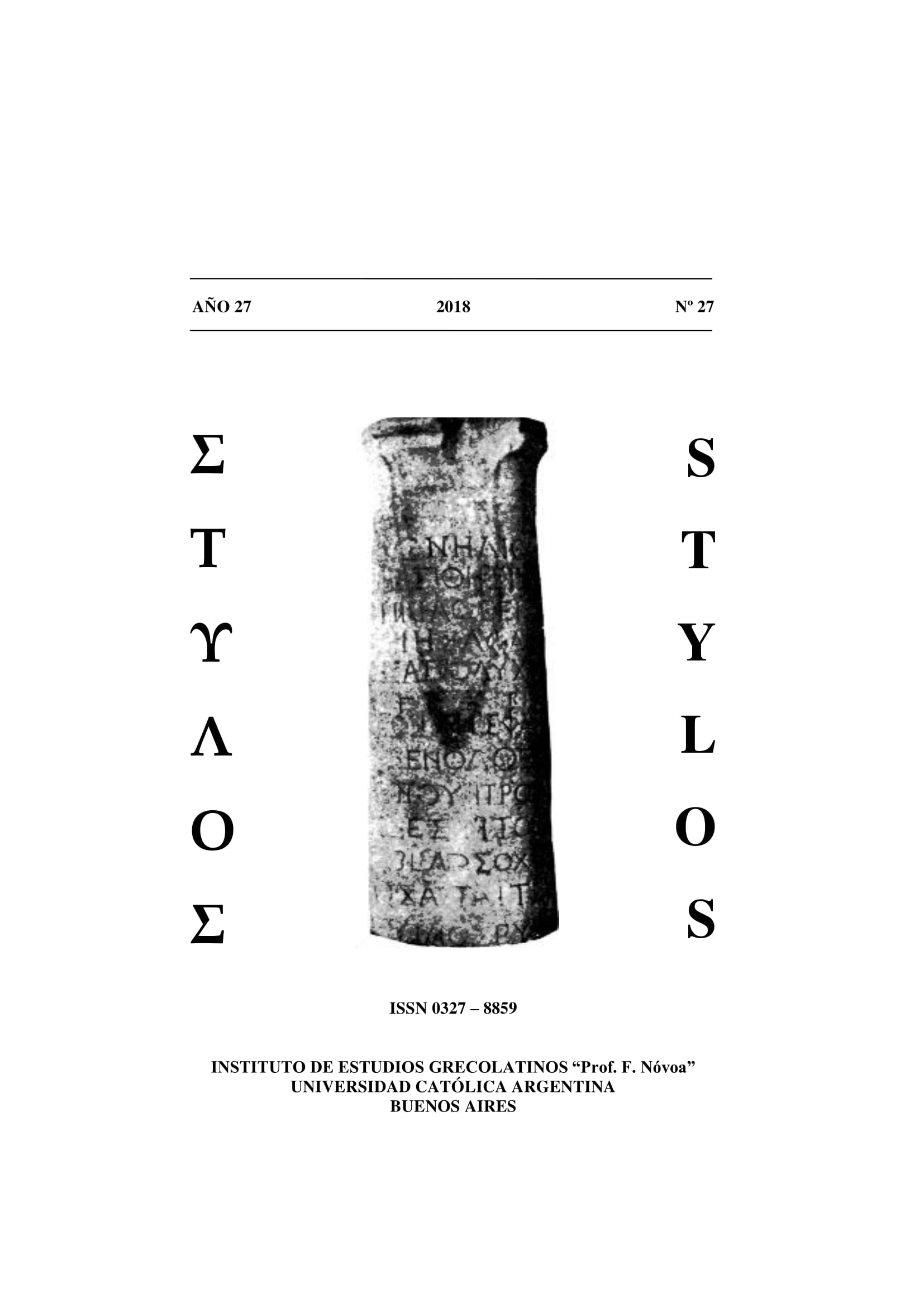LAS PROFECÍAS DE TIRESIAS EN EL CICLO TEBANO DE METAMORFOSIS DE OVIDIO
Palabras clave:
Ciclo tebano, Tiresias, profecía, prolepsis, narradorResumen
Tiresias es el primer personaje del Ciclo tebano que, a pesar de sufrir una metamorfosis-castigo (la ceguera), no muere ni padece indicios de futura desgracia (Brisson 1976; 1997). Sus profecías se constituyen en prolepsis que luego respaldan y expanden el narrador y el desarrollo de los sucesos, sustentando así la unidad del Ciclo tebano y evidenciando su cumplimiento. En efecto, tales profecías no solo desencadenan los episodios de Narciso y Penteo sino la totalidad del Ciclo (Fantham 2004:40). Nos proponemos mostrar que, al legitimar el saber del adivino, el narrador ovidiano guía al lector hacia una simpatía por el augur y le otorga, en consecuencia, mayor credibilidad y autoridad en el marco de la configuración del dios Baco. Tiresias no presenta, pues, argumentos en contra de los cultos báquicos, que finalmente se imponen (4.605-606) y confieren sentido a la totalidad del Ciclo.Descargas
Citas
ÁLVAREZ, C. – IGLESIAS, R. M. (2011). Ovidio: Metamorfosis, Madrid, Cátedra.
ANDERSON, W. S. (1997). Ovid’s Metamorphoses Books 1-5, Norman and London, University of Oklahoma Press.
BARCHIESI, A. (2006). “Narrative Technique and Narratology in the Metamorphoses”, en Hardie, P. (ed.), The Cambridge Companion to Ovid, Cambridge, Cambridge University Press, 180-99.
BARTHES, R. et al (1970). Análisis estructural del relato, Buenos Aires, Editorial Tiempo Contemporáneo.
BRISSON, L. (1997). Le sexe incertain: Androgynie et hermaphrodisme dans l'antiquité gréco-romaine, Paris, Belles Lettres.
CALVO, J. L. - GARCÍA GUAL, C. - DE CUENCA, L. A. (1982). “Eurípides. Bacantes”, en Tragedias III, trad. y notas, Madrid, Gredos.
DE JONG, I. J. F. (2004a). A Narratological Commentary on the Odyssey, Cambridge.
DE JONG, I. J. F.- NÜNLIST, R.- BOWIE, A. M. (eds.) (2004b). Narrators, Narratees, and Narratives in Ancient Greek Literature, Leiden, Brill.FANTHAM, E. (2004). Ovid’s Metamorphoses, Oxford, Oxford University Press.
GALINSKY, K. (1975). Ovid’s Metamorphoses. An Introduction to the Basic Aspects, University of California Press, Berkeley.
GENETTE, G. (1972). El discurso del relato - Figuras III, Lumen.
KEITH, A M. (2002). “Sources and Genres in Ovid’s Metamorphoses 1-5”, en Weiden Boyd, B. (ed.) Brill’s Companion to Ovid, Leiden-Boston-Köln, Brill, 235-69.
KEITH, A. (2009). “Sexuality and Gender”, en Knox, P., A Companion to Ovid, Blackwell Publishing, 355-369.
OSBORNE, R. (2006). “Homer society”, en Fowler, R. (ed.), The Cam-bridge Companion to Homer, 206-219.
SEGAL, C. (1998). “Ovid’s Metamorphic Bodies: Art, Gender, and Vio-lence in the ‘Metamorphoses’”, en Arion 5, No. 3, 9-41.
TARRANT, R. J. (2009). P. Ouidii Nasonis Metamorphoses, Oxford, Ox-ford Clarendon Press.
TOLA, E. (2007). “Cadmo y los peligros de la mirada en Ovidio, Metamorfosis III”, Circe 11, 225-232.
Descargas
Publicado
Cómo citar
Número
Sección
Licencia






